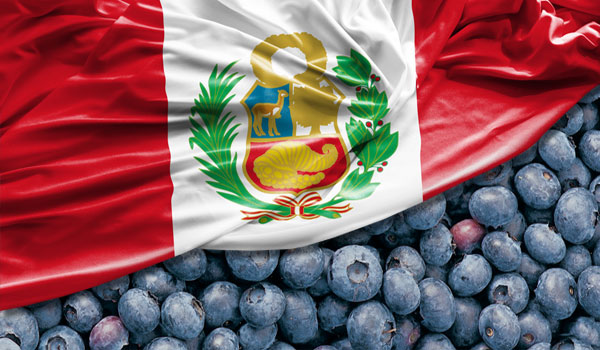
PERU: THE NEW ELEPHANT IN THE ROOM
One word kept coming up at the 2018 Oregon Blueberry Conference: Peru.
With projected annual production of 120 million pounds for the 2017-18 season, on about 12,000 acres, the country’s blueberry production volume is well behind that of the U.S., Chile and even Canada. But, as Cort Brazelton of Fall Creek Farm and Nursery pointed out in his presentation, “that (production) was near zero seven years ago.”
In an earlier presentation, Andres Armstrong, executive director of the Chilean Blueberry Committee, said Peruvian blueberries are creating competition for some of Chile’s counter-season sales.
And Rod Cook, president of Ag-View Consulting in Olympia, Washington, talked about the importance of the market windows for which Peru and Mexico are now battling Chile.
“Peru and Mexico are carving both ends off of the Chilean production cycle,” Cook said, “and those tend to be the prime markets where you generally make your money. The Chilean growers are facing some very serious competitions, at least in their shipments to the U.S.”
Peru’s emerging blueberry industry has some significant challenges, Brazelton said, including barriers to enter the organic market because of fumigation requirements, traversing an internal transit system that can be fraught with issues and achieving good fruit flavor. But even here, there is an upside.
“Today, (Peruvian) fruit quality has the perception of being sour, but having better firmness,” Brazelton said. “But some retailers and traders in the last Fruit Logistica indicated they would rather have firm, less sweet fruit from Peru than soft, flavorful fruit from other imported sources.”
As for strengths, the country has many: It has good access to land, water and labor; its peak season falls at an opportune time for several international markets; and it can turn varieties around in a matter of two years.
“Getting into commercial production more quickly is a very important thing in our business,” Brazelton said. “As new varieties come on line, Peru and Mexico, which isn’t too far off from that speed, are going to be aggressively siphoning them off and introducing them.”
Brazelton predicted Peruvian production to double by 2023.
One benefit Peru’s production could have for the U.S. blueberry industry is a potential for new markets, Brazelton said. Peru is expected to aggressively pursue new markets for their berries, such as Vietnam and Indonesia, where the U.S. industry currently is working on market access.
“They are going to try to develop new consumers in ways that no one else has ever done,” Brazelton said.
“If there is any favor they are going to do for us, they probably are going to introduce a lot of new people to blueberries that we haven’t done as an industry,” he said. “And, who knows, maybe at some point they might need some processed products and fresh blueberries that we produce.”
|
